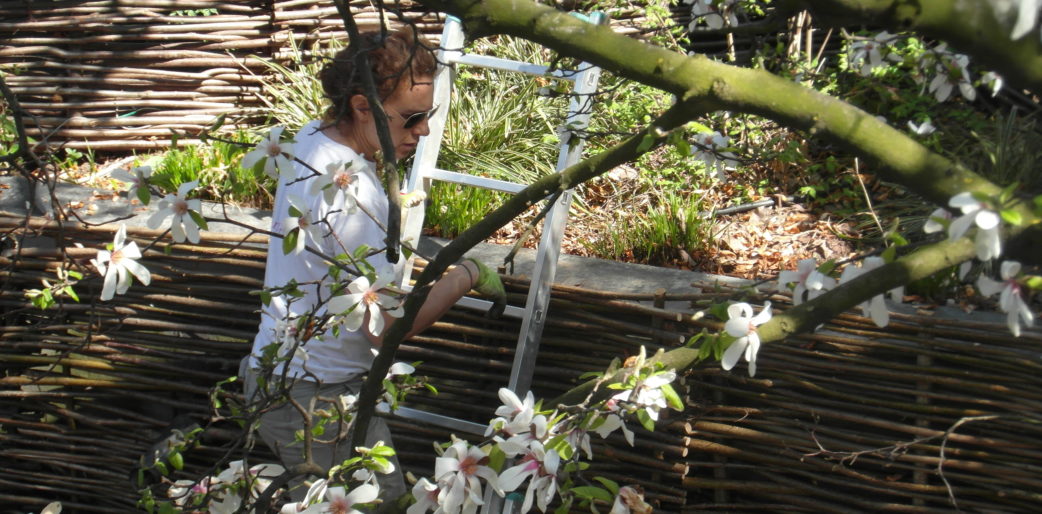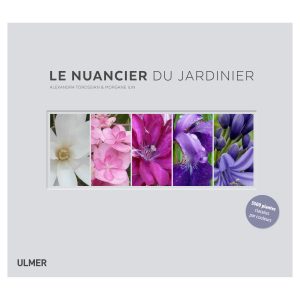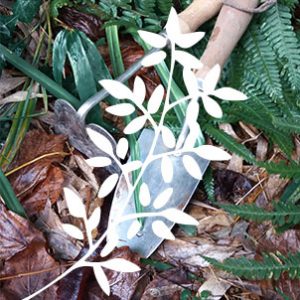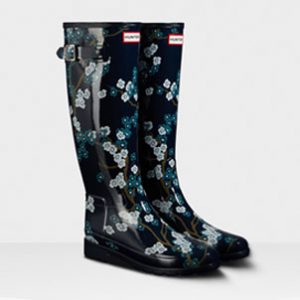What is the best season for planting in the garden?
Is there a best season to put plants in the ground? This is a question that thousands of people ask themselves when they are happy owners of a garden. In any case, this is a question that ALL our clients ask us when it comes to planning their garden layout …
This question is of course legitimate: we want it to work, we want the plant to survive, we want our god’s talent or (more modestly) our gardener’s aknowledged by Nature! We worry, we wonder, the fear of doing something stupid hangs over us. September? March ? Not July anyway!
No, not July. Because everyone still has this intuition that it should not be too hot when planting. True: in summer, plants are growing fast, need a crazy amount of energy to make leaves, flowers, roots and so on. The slightest lack of water, the slightest disruption of their roots, the least heat wave would require them to increase efforts to remain “green”. If that happens, the plant gets stressed and loses its leaves to have less energy to produce. Not so goodlooking effect, life risk in the long term.
(Little digression that comes to me about the subject of watering plants under the sun: NO it does not burn leaves under a so-called magnifying effect. It can even be said that “to sprinkle” the foliage of certain shrubs and trees in the sun allows them to lower their temperature in case of hot weather. However, watering in the sun is more greedy because water evaporates faster than in the morning or evening, and the plant does not have time to take advantage of it. A question of effectiveness, therefore, not of abuse.)
Let’s go back to the seasons and try to avoid most common stereoptypes.
Most plants are sold in containers, in pots. You can plant these all year long, from January to December, avoiding July or August or all summer depending on the region, to avoid the trauma mentioned above. This gives us 10 months out of 12, provided you have watering well in mind between April and November.
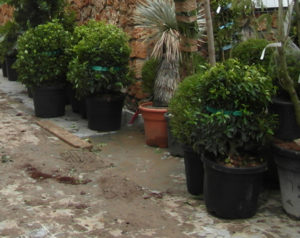 container plants
container plants
Some plants are sold with earth around their roots but no plastic container (often large trees in nurseries). These are torn from the open ground where they grew, but marketed with soil around the roots, held by a net made of string or metal (the “tontine” in french). They are not necessarily sold all the year, but rather between September and April. They must be planted without delay, always removing the protective net around the roots … (please, no laziness!) With deep watering at the moment of plantind AND after.
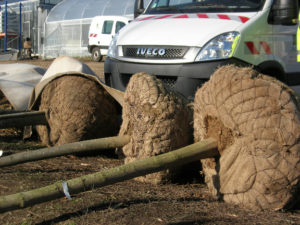 earth plants
earth plants
Finally, rare plants are sold with bare roots, that is to say, torn from their native soil, but without soil around the roots. These plants (only trees and shrubs) are sold only below a certain temperature, when plants are dormant, so between November and March, roughly. They must be planted right away, according to the technique of “pralin” (mix soil + water in which the roots are soaked before planting). As far as these rare bare root plants are concerned, you can plant them during autumn or winter but off-season frost, which would be fatal.
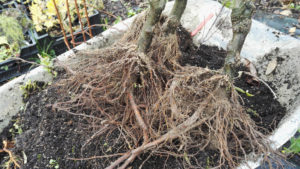 bare root plants
bare root plants
Now a little of our experience.
In autumn, the production of leaves and flowers decreases until it stops at a certain temperature. The plant will stop working, and lose its leaves (for deciduous). The earth is always hot from summer, and the rains are often back on a regular basis. No need to water over time, no need to weed.
Fall = excellent season to plant, but the result will look a little sad, and perspective of a winter will offer little gratification for your work as a gardener. On the other hand, winter and frost will strengthen the plant (exotic plants excepted). So, beautiful blooming is sure to come next spring.
SO Autumn = excellent season to plant, provided you put your impatience aside until the beautiful days come back.
In winter, the earth is cold, sometimes frozen or waterlogged. All spade moves will damage the structure of the earth, not to mention that they will often be painful to execute. The plant will be like gauging in its cold hole, and will probably be less well protected than in other seasons.
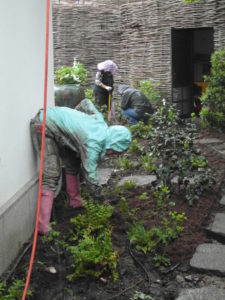
THEREFORE Winter = possible season to plant, but according to the weather and the quality of the land, the work will quickly turn to a nasty pig’s job, with a plant poorly protected from frost.
In the spring, the plant slowly wakes up, the sap rises and the plants are ready to to grow. The earth is still cold but already soft to work. Weeds are not numerous yet (not for long!). So it’s easy to work.
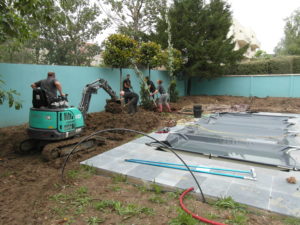
SO Spring = interesting season for planting, provided you monitor the watering from April-May AND the weeding. Advantage: the plants flourish in the months following planting, IT’S ALL IMMEDIATE PLEASURE !!!
To sum up, autumn could be considered as the best season for planting, but you can plant roughly all year long with a little bit of precautions… It’s up to you, then!
Second digression for those who want a garden architect for their garden: Planning the complete design and layout of a landscaped garden is not done in a few weeks! SO IF YOU WANT A BEAUTIFUL GARDEN IN SUMMER, PLEASE CONTACT YOUR GARDEN ARCHITECT BETWEEN SEPTEMBER AND DECEMBER OF THE PREVIOUS YEAR !!!! You’ve been warned! 😉



